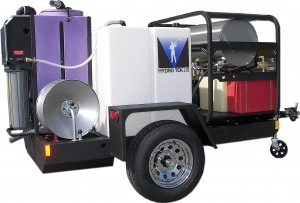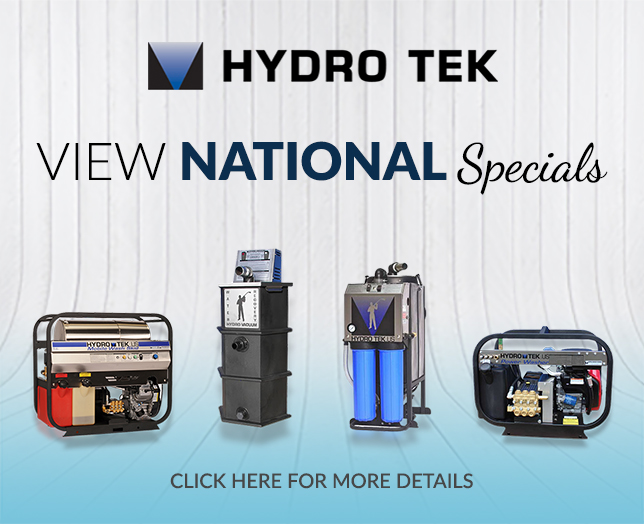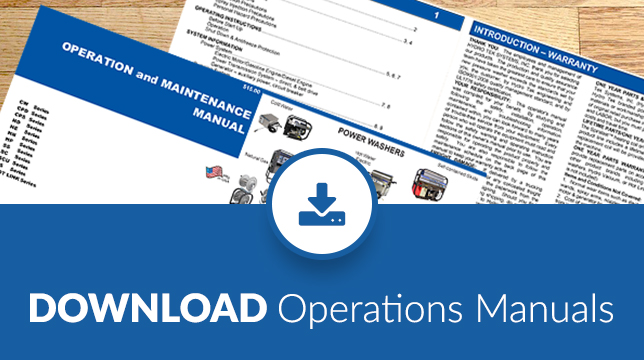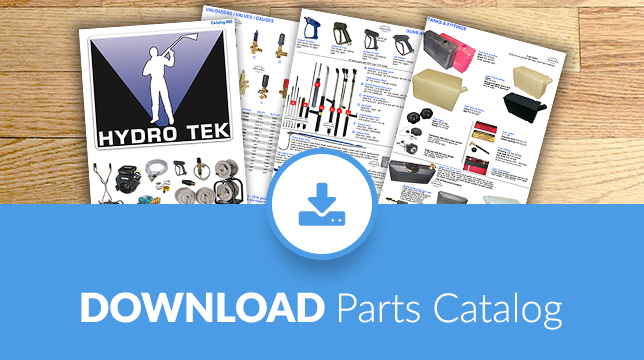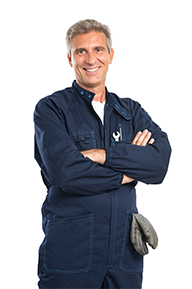When the pressure washing contractor is complying with the storm drain runoff regulations or when washing in a water restriction area due to drought, it often is important to be able to filter the washer water through a portable wash water recycle system in order to be reused. Hydro Tek is the leader in design and manufacture of portable wash water recycle equipment so we wanted to explain some of the terms used and also the stages of filtration that make this pressure washer accessory work so effectively. Filtering in multiple stages starting with the largest material and advancing to the finest particle size works much better than one large fine particle filter.
Stage 1: The water pickup device that connects to the end of the vacuum hose and is placed in the water puddle is called the scupper. It is the first stage in the filtration process and must be heavy enough to stay under water and not move around from the pulses of the vacuum hose. It must be corrosion resistant to withstand the elements. Stainless steel is the ideal material for the scupper. It should also have a wide and narrow slot so that it filters out the larger debris over 1/4” diameter. Ideally, as dirt and other large material is pushed toward the scupper by the pressure washer operator, most of it should stay on the ground while just the water is sucked up. The sand, rocks, and debris can then be swept up into a dustpan for disposal after the washing is completed. If oil is present on the area to be cleaned, the best point to absorb that is before is goes into the water recycle system. An oil absorbent sock or boom should be placed in front of the scupper. If the scupper is designed properly, it will create two vortices of air at each corner of the scupper when it is placed in a deeper puddle of water. This is an important design feature because it mixes air with the water being picked up by the hose which helps the water travel up long lengths of hose much better and reduces surging of the vacuum hose. If there is not any air mixed with the water being pulled up the vacuum hose, the vacuum may stop drawing as it struggles to overcome the weight of the water. This known as hydraulicing.
Stage 2: The wash water from the pressure washing operation is drawn into a bag filter or a strainer basket to filter out any material that is over the size of the tip on a ball point pen. A larger strainer basket is better because it can simply be dumped out and reused over and over while a bag filter is difficult to remove and may only be able to be cleaned and reused one or two times before a replacement is needed.
Stage 3: Separation is a great way to separate trash and oil that floats and particles that sink from the wastewater in the middle. The center is much cleaner than the water at the top or bottom of the tank. This is done with a vertical shaped vacuum collection tank that has a cone shaped bottom and by pumping the water with an inverted fitting that is located at the ideal position in the collection tank. This is referred to as the center of the water column. The angle of the cone is critical so that the “heavier than water” debris slide down the sides and collect at the bottom without being disturbed by subsequent water flowing in the vacuum collection tank. When the pressure washing job and collection of wastewater is completed for the day, about 5 gallons of sludge will remain in the bottom of the cone. You can typically process and reuse over 2,000 gallons of wash water in a day and accumulate only 5 gallon of sludge depending on the amount and size of the debris in the wastewater stream. This can then be dumped into a 5 gallon bucket for proper disposal or evaporation. The tank must be equipped with a large (1 ½”) dump valve and will drain out completely if the sides of the cone are at the correct angle. If not at the correct angle the tank will need to be rinsed out or the remaining sludge will begin to smell bad. This is referred to as going septic. You cannot store any sludge or recycled water for more than a few days because of the bacteria in the water, and should make it a regular practice to drain these tanks daily or add the proper amount of chlorine to control odor. The vacuum collection tank is purple in color which indicates that they contain water that you cannot drink. This is referred to as non-potable water.
Stage 4: Wastewater should then be pumped through disposable filter cartridges to remove smaller particles that remained suspended in the water. The initial cartridge filters out the larger of the particles that passed through the strainer basket. The most economical (under $30) filter cartridges that still work very well are made from cotton string and are referred to as cotton wound filters. There are also cartridges available that have pleated paper and can even be impregnated with carbon to filter out oil which will typically improve the wastewater clarity but can cost more than double the string wound filters. The filters are measured by the size of the particles they are designed to remove. This measurement is referred to as microns. For reference, table salt has a particle size of 100 microns. A good indicator of when to replace the cartridges is a pressure gauge located before the filters. You will be able to tell when to replace them when the back pressure exceeds 30psi on most systems. If the filters are not replaced, eventually water will not pass through them. This is referred to as blinding. If there is a lot of debris in the waste water, the cartridges may not last more than a day, so be sure to carry extras.
Stage 5: The second filter cartridge removes the finer particles that have passed through stage 4. This cartridge typically filters to meet the specifications that the ceramic pump manufacture requires on the pressure washer before voiding their warranty. This filter is usually sized between 10 on 20 microns. The pump specification typically requires no particles larger than 20 microns. For reference, coal dust is 20 microns and talcum powder is 10 microns.
Stage 6: The final filter is either another cartridge or a bag filter. It is best to go down to 5 micron for the final filter. This is called the polishing filter. Going down to 5 micron water purity improves the clarity of the water and is less abrasive on the pressure washer pump and unloader. This makes them last longer and helps avoid warranty issues. Another good way to avoid warranty issues is to buy both the pressure washer and the recycle system from the same manufacture. The preferred final filter is a large polypropylene bag filter. These can fit nicely inside the bulk water tank and are easier to inspect and change than a cartridge filter which requires a wrench to spin off the cartridge housing. The polypropylene bag filter also attracts any oil that may have passed thru the stage 5 cotton filter and you may be able to clean and reuse it a couple times but really won’t need to as these are only about half the price of the cotton wound filter cartridge. Be sure you clean or inspect the bag filters often as they get very heavy when filled with wet debris and can also dislodge and contaminate your recycled water if not maintained properly.
Recycled wash water is ideal for flatwork cleaning on surfaces like concrete. For painted surfaces or area sensitive to water spotting, you will want to do a final rinse with tap water or deionized spot free water to ensure a clean finish.




